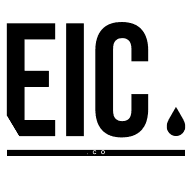Welcome to a comprehensive guide on mastering editorial management. In this blog post, we will delve into effective strategies that can transform your editorial process, ensuring optimal productivity and quality. Whether you're a seasoned editor or a novice in the field, these strategies will provide valuable insights to enhance your editorial management skills.
Understanding the Basics of Editorial Management
Editorial management forms the backbone of any publication process. It involves planning, organizing, and controlling the flow of content from conception to publication. A successful editorial manager must possess a clear understanding of these processes.
The first step in mastering editorial management is understanding its importance. Editorial management ensures consistency, accuracy, and quality in all published content. It also helps in maintaining a steady flow of content, which is crucial for any publication.
The second step is familiarizing yourself with the different stages of editorial management. These stages include content planning, assignment, creation, editing, and publication. Each stage requires a unique set of skills and strategies.
Content planning involves deciding what to publish and when. It requires a deep understanding of your audience and their interests. Assignment involves choosing the right person for each task. Creation involves producing the content, while editing ensures the content meets the required standards. Publication involves making the content available to the audience.
Developing a Robust Editorial Plan
A robust editorial plan is a cornerstone of successful editorial management. It serves as a roadmap, guiding the entire editorial process.
To develop a robust editorial plan, you need to understand your audience. Conduct a thorough audience analysis to determine their interests, needs, and content consumption habits. This information will guide you in creating content that resonates with your audience.
Once you understand your audience, you can start planning your content. Decide on the topics to cover, the type of content to create, and the publication schedule. Ensure your plan aligns with your overall business goals.
A good editorial plan should also include a contingency plan. This will help you handle any unexpected situations that may disrupt your editorial process. For instance, you might have a backup content creator in case your primary content creator is unavailable.
Implementing Efficient Assignment Strategies
Efficient assignment strategies are crucial in editorial management. They ensure that each task is handled by the most suitable person.
Start by identifying the strengths and weaknesses of your team members. This will help you assign tasks based on individual skills and abilities. For instance, a team member with excellent research skills might be best suited for content creation, while one with keen attention to detail might excel in editing.
Also, consider the workload of each team member. Avoid overloading certain team members while others have little to do. Distribute the tasks evenly to ensure everyone has a manageable workload.
Remember to communicate clearly when assigning tasks. Ensure each team member understands what is expected of them. This will help avoid misunderstandings that could derail the editorial process.
Enhancing Content Creation and Editing
Content creation and editing are critical stages in the editorial process. They determine the quality of the final product.
For effective content creation, ensure your content creators understand the objectives of each piece of content. They should also be familiar with your audience and their interests. This will help them create content that resonates with your audience.
Editing, on the other hand, involves checking the content for accuracy, consistency, and quality. It requires a keen eye for detail and a good understanding of language and grammar. Provide your editors with a comprehensive editing checklist to guide them through the process.
Remember to provide constructive feedback to your content creators and editors. This will help them improve their skills and produce better content in the future.
Streamlining the Publication Process
The publication process involves making the content available to your audience. It requires careful planning and execution.
Start by choosing the right publication platform. This could be a blog, a website, a magazine, or a social media platform. The choice of platform will depend on your audience and the type of content you create.
Once you have chosen a platform, plan your publication schedule. Decide when to publish each piece of content. Consider the habits of your audience when planning your schedule. For instance, if your audience is most active online in the evenings, schedule your publications for that time.
Ensure you have a system for tracking the performance of your published content. This will help you determine if your content is achieving its objectives. Use this information to improve your future content.
Embracing Technology in Editorial Management
Technology plays a crucial role in modern editorial management. It can help streamline the editorial process and improve productivity.
There are numerous editorial management tools available today. These tools can help in planning, assignment, content creation, editing, and publication. They can also help in communication and collaboration among team members.
When choosing an editorial management tool, consider your needs and budget. Some tools are free, while others require a subscription. Also, consider the learning curve of the tool. Choose a tool that your team can learn and use easily.
Remember to provide training for your team on how to use the tool. This will ensure everyone can use the tool effectively, improving your overall productivity.
Wrapping Up: Mastering Editorial Management
Mastering editorial management requires understanding the processes involved, developing a robust editorial plan, implementing efficient assignment strategies, enhancing content creation and editing, streamlining the publication process, and embracing technology. By applying these strategies, you can transform your editorial process, ensuring optimal productivity and quality. Remember, successful editorial management is a continuous learning process. Always be open to new ideas and strategies to keep improving.

